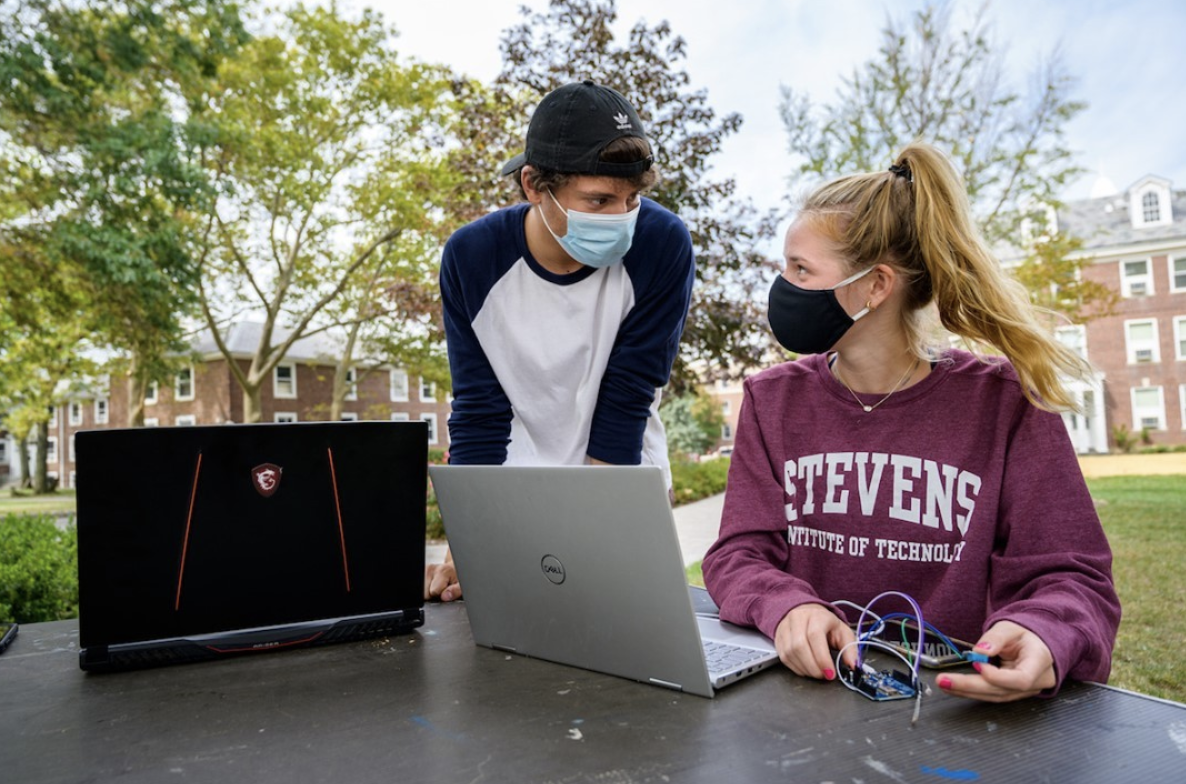For many Stevens students, hearing about a completely virtual fall semester presented a challenge in terms of how a full semester of virtual learning would compare to in-person classes. Inevitably, the question arose of just how effective is virtual learning for college students?
First, what contributes to effective learning? As defined by Dr. Anna Ya Ni of California State University San Bernardino in a 2013 research paper, effective learning can be evaluated in terms of “student interaction and performance.” Interactions refer to the student’s ability to ask a question, share an opinion, or disagree with a point of view, while student performance refers to grades.
One of the many platforms used extensively by Stevens students and professors has been Zoom. The video conferencing application has enabled students to stream their professor’s lectures and ask questions in real time, but can Zoom replace in-person classes?
A study published this past month by two educators found that for students at the University of Jordan, virtual learning has turned out to be more effective for students. The study concluded that 87.0% of students found the virtual platforms to help them better manage their study time, but only 71.3% interviewed believed it could be a full-time education solution. This means that while students may appreciate of the use of virtual platforms complementing their education for the past two semesters, they are unlikely to want to continue taking online classes for the rest of their education.
Unlike Zoom, which is designed for real-time communication, another study conducted by four professors looked deeper into how effective asynchronous video learning is for engaging with students. The professors looked at four main elements of virtual learning in their study, focusing on student interactions more than student performance. The elements of the study consisted of recording student frustration or excitement, preserving student social connections, and allowing students to curate more thoughtful and detailed feedback for group projects. Focusing on the use of platforms such as Flipgrid and VoiceThread, the professors concluded that the majority of students were in favor of asynchronous studies for their ability to deliver and receive meaningful feedback on their projects at a time that was convenient for them.
Flipgrid, which allows students to submit informal, short video recordings, is used at Stevens by Professor Karl, Assistant Professor of Political Science, who explained that Flipgrid enables her “to see and hear from everyone; when classes rely entirely on larger Zoom discussions, where the conversation is often steered by the same small number of voices.” However, Professor Karl additionally noted that it “doesn’t seem to be as useful as real-time conversations.”
Andrew Kinney, a senior Mechanical Engineering major mentioned that Flipgrid has worked to aid his learning, despite the initial awkwardness of the software. Being able to watch a couple presentations “made it a lot easier to give valuable feedback.”
Jenna Pralat, a junior Chemical Biology major, noted that she has been using a virtual world lab simulator known as Labster. Pralat described the platform as a “lab simulator where you click to put on gloves, click to put on a lab coat, and click a pipette and conduct the experiment.”

According to a paper outlining an experiment which evaluated the effectiveness of using a virtual patient as a learning resource in online nursing courses, very few nurses found virtual learning beneficial in improving their skills. The study looked at how nurses found an e-learning system to help improve their written and oral communication, in which it was concluded that only 26.6% of participants ‘agreed’ and ‘strongly agreed’ that the Virtual Patient Learning system enabled them to improve their soft skills. The paper additionally concluded that the lack of hands-on experimentation and interaction with their day-to-day clients deprived these new nurses of a basic on-the-job skill.
Pralat expressed concerns about how the lack of in person labs will impact her research opportunities and aspirations. She expressed that while her lectures have been effective so far, she noted that another semester of virtual learning for her would be “100% detrimental” to her academic success. Pralat mentioned that in some of her classes, “you learn how to use the materials,” but she feels “robbed from experiential learning.”
Grace Miguel, a junior Software Engineering major mentioned she uses platforms like EduPack and WileyPlus. She noted that they have been relatively easy to use, and while the current setting is not ideal, the support from her classmates and professors has been helpful. Despite the benefits of virtual softwares in her other classes, Miguel mentions that the lack of appropriate software for one of her class projects makes it difficult to maintain “transparency and communication across group members and group projects.”
Virtual learning has also caused some educators and students to question the purpose of the four-year residential experience. In a Harvard Business Review paper, two professors noted that “four year [face to face] college education no longer rests on its laurels while there are massive online open courses.”
Virtual education is here you stay in some forms, such as massive online open classes. But for now, although college education has the potential to be effective on virtual platforms, many students and professors continue to discuss the elements left out of virtual learning that make in-person learning so worth it.

Be First to Comment